In the world of mountain biking, agility reigns supreme. Whether carving through singletrack or tackling technical descents, responsiveness and control define your ride.
The secret to unlocking next-level off-road performance lies in two innovations: an ultralight carbon MTB frame and a Boost fork. Together, they create a synergy that elevates speed, precision, and confidence on any trail.
Ultralight Carbon Frame: The Backbone of Speed
Carbon fiber's magic lies in its strength-to-weight ratio. Trifox’s SDY20 frame exemplifies this, shedding grams without sacrificing durability. A lighter bike accelerates faster, climbs easier, and flicks through tight turns effortlessly. Carbon’s natural vibration damping also enhances comfort, reducing fatigue on long rides. But the real win is stiffness—optimal torsional rigidity ensures every watt of power translates to forward motion, while compliant seatstays absorb trail chatter for better traction.
Boost Fork: Precision Meets Stability
The Boost standard (110mm front axle spacing) isn’t just a buzzword—it’s a game-changer. Wider hub spacing increases wheel stiffness, preventing flex during hard cornering or rock strikes. This means sharper steering response and unwavering control in loose terrain. Paired with a lightweight carbon frame, the Boost fork ensures your front wheel tracks true, boosting confidence on steep descents and technical climbs.
The Dynamic Duo
Combine the SDY20's featherlight frame with a Boost fork, and agility reaches new heights. The frame's nimble character complements the fork’s stability, creating a bike that’s both quick and composed. Tight switchbacks? Effortless. Rocky descents? Unshakable. This pairing reduces rider fatigue, letting you push harder for longer.
For riders seeking an edge, Trifox’s SDY20 merges cutting-edge materials and smart engineering. It's not just about weight or stiffness—it’s how these elements harmonize to redefine off-road agility.


Choosing the right mountain bike fork can make or break your ride. With so many options—rigid, suspension, air-sprung, coil-sprung—it’s easy to feel overwhelmed. But don’t worry! We’re breaking down the most common MTB fork types and how they align with different riding styles.
1. Rigid Forks: Simplicity Meets Lightweight
Rigid forks (no suspension) are ultralight and low-maintenance, ideal for smooth trails, gravel paths, or bikepacking where weight savings matter most. They’re perfect for cross-country purists or riders prioritizing efficiency over comfort. However, they lack shock absorption, making them less suitable for technical terrain.
2. Hardtail Suspension Forks: Versatility on a Budget
Hardtail forks (front suspension only) strike a balance between efficiency and control. Air-sprung models (like Trifox’s carbon suspension forks) are lightweight and adjustable, ideal for trail riding or XC racing. Coil-sprung forks, while heavier, offer plush performance for all-day endurance rides.
3. Full Suspension Forks: Conquer the Gnar
Paired with a rear shock, full suspension forks soak up bumps on aggressive descents. Look for forks with 150–180mm of travel for enduro or downhill riding. Features like adjustable damping and lockouts (available in premium models) let you switch between climbing efficiency and downhill stability.
4. Hybrid Forks: The Best of Both Worlds?
Some forks blend air and coil springs for tunable performance. These hybrids cater to all-mountain riders who tackle mixed terrain. They’re adaptable but often come at a higher price point.
Key Considerations
Travel: Match fork travel to your terrain (80–120mm for XC, 130–150mm for trail, 150mm+ for enduro/downhill).
Weight: Carbon forks (like Trifox’s) reduce weight without sacrificing strength—critical for climbing.
Axle Standards: Boost spacing (110x15mm) improves stiffness and tire clearance.
Budget: High-end forks offer adjustability, but mid-range models can still deliver great performance.
Why Carbon Forks?
Carbon fiber forks, such as those from Trifox Bike, combine durability with vibration damping—key for long rides. They're also corrosion-resistant and excel in stiffness-to-weight ratios, making them a favorite among competitive riders.
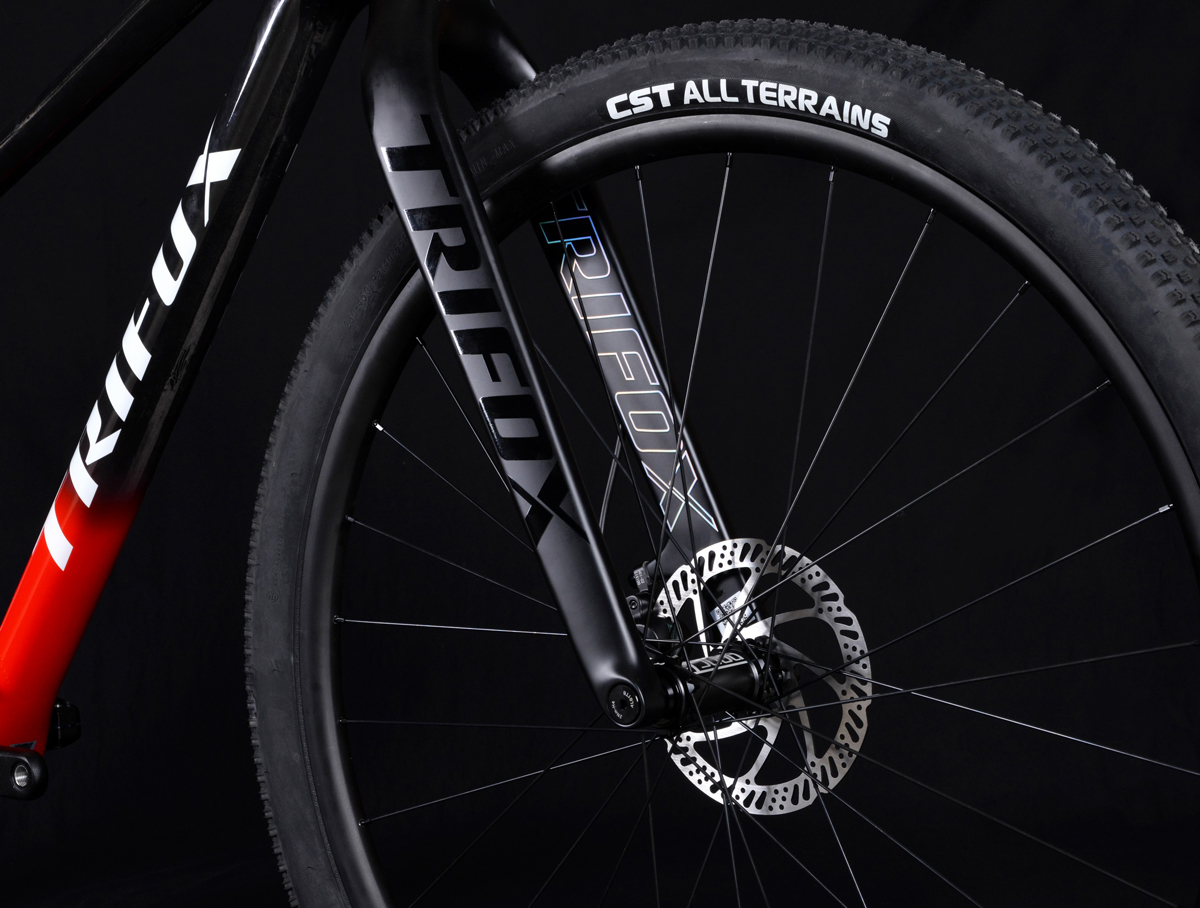
Your fork choice depends on where and how you ride. For XC racers, a lightweight air-sprung carbon fork is ideal. Trail riders benefit from adjustable 120–140mm travel, while enduro shredders need burly 150mm+ forks. Check out Trifox Bike’s carbon forks to find a high-performance option tailored to your style.
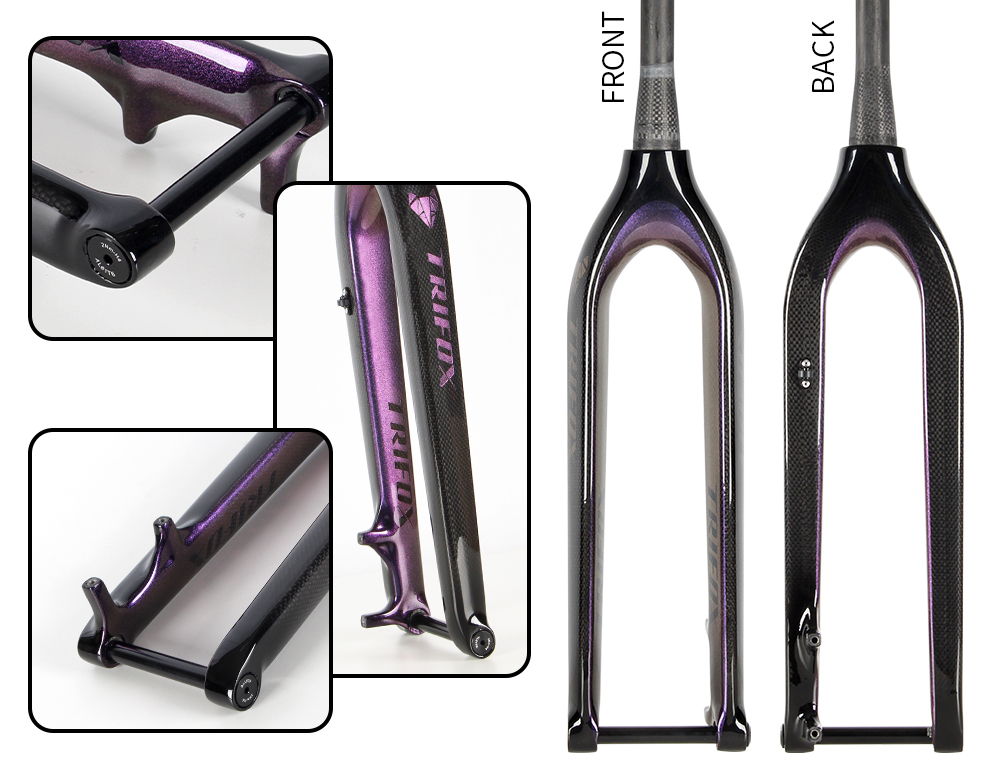
When upgrading or building your mountain bike, one of the key decisions you’ll face is whether to go with a Boost or non-Boost chainring. This choice can significantly impact your bike’s performance, compatibility, and overall ride quality. But what exactly is the difference, and how do you know which one is right for you? Let’s break it down.
Understanding Boost vs. Non-Boost
The term “Boost” refers to a newer standard in mountain bike design that widens the hub spacing—from 142mm to 148mm in the rear and from 100mm to 110mm in the front. This wider spacing allows for stiffer wheels, better tire clearance, and improved chainline alignment. As a result, Boost-compatible chainrings are designed to work with this updated spacing, ensuring optimal performance and shifting precision.
Non-Boost chainrings, on the other hand, are designed for traditional hub spacing. While they’re still widely used and compatible with older bikes, they may not offer the same level of stiffness and tire clearance as Boost setups.
Which One Do You Need?
The answer depends on your bike’s specifications. If you’re riding a modern mountain bike with Boost spacing, you’ll need a Boost chainring to maintain proper chainline and shifting performance. However, if your bike uses traditional spacing, a non-Boost chainring is the way to go.
It's also worth considering your future plans. If you’re upgrading other components, like your fork (check out Trifox Bike’s rigid forks at TrifoxBike.com), opting for Boost compatibility can future-proof your setup and unlock additional benefits like improved wheel stiffness and tire options.
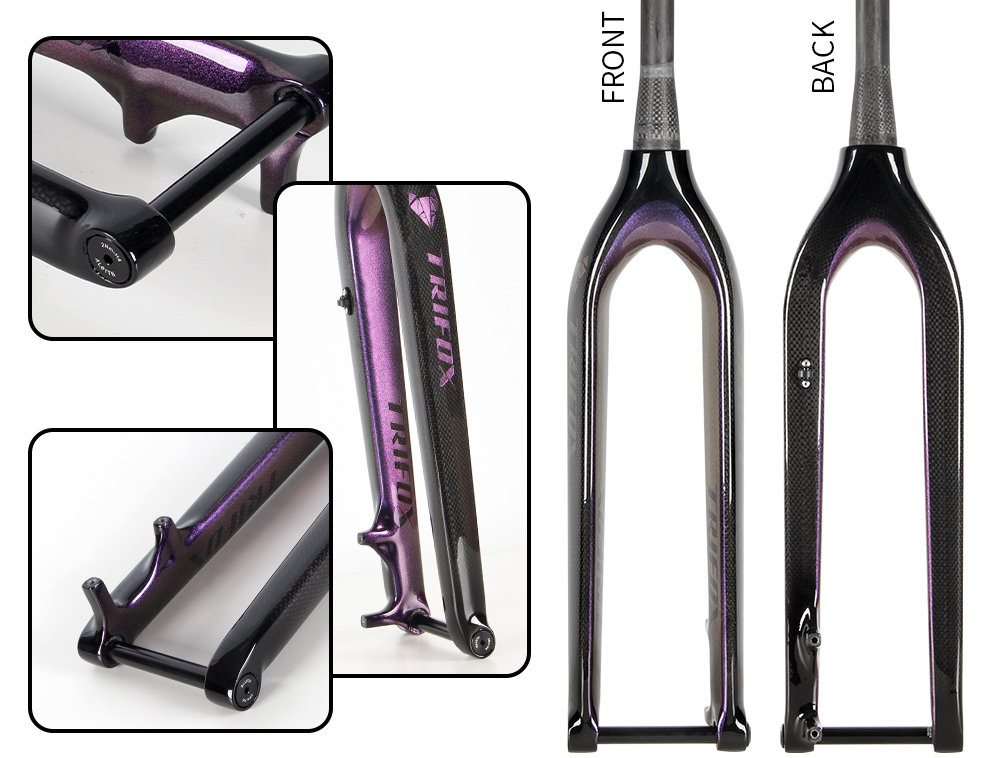
Choosing between Boost and non-Boost chainrings ultimately comes down to your bike’s specifications and your riding goals. If you’re unsure, consult your bike’s manual or a trusted mechanic. And if you’re in the market for high-quality components, Trifox Bike offers a range of options to suit your needs. Whether you’re sticking with non-Boost or embracing the Boost revolution, the right chainring will keep your ride smooth and efficient.

If you've been shopping for a new bike or upgrading your current one, you’ve likely come across the term “Boost” – especially when it comes to forks. But what exactly is Boost, and why does it matter? Let’s break it down.
What is Boost?
Boost is a modern standard for mountain bike hubs, axles, and forks that was introduced to improve bike performance and durability. Specifically, Boost refers to a wider hub spacing compared to traditional standards. For forks, this means a **110mm x 15mm thru-axle** spacing (up from the older 100mm x 15mm standard). This extra width provides several key benefits for riders.
Why Boost Matters
Boost is a modern standard for mountain bike hubs, axles, and forks that was introduced to improve bike performance and durability. Specifically, Boost refers to a wider hub spacing compared to traditional standards. For forks, this means a **110mm x 15mm thru-axle** spacing (up from the older 100mm x 15mm standard). This extra width provides several key benefits for riders.
Why Boost Matters
1. Increased Stiffness and Strength: The wider hub spacing creates a stiffer wheel and fork interface, improving handling and control, especially on rough terrain.
2. Better Tire Clearance: Boost allows for wider tires and better clearance, giving you more options for tackling different trails.
3. Improved Chainline: The wider spacing optimizes the chainline, which enhances shifting performance and reduces wear on drivetrain components.
Is Boost Right for You?
Boost has become the industry standard for most modern mountain bikes, from cross-country to downhill. If you’re upgrading your fork or building a new bike, Boost is likely the way to go. However, if you’re working with an older bike or components, compatibility might be a concern. Always check your frame and hub specifications before making the switch.
Boost vs. Non-Boost
While Boost offers clear advantages, non-Boost systems are still functional and widely used. The choice ultimately depends on your riding style, bike setup, and future upgrade plans.

Boost on a fork isn't just a buzzword – it’s a game-changer for modern mountain biking. With improved stiffness, better tire clearance, and enhanced performance, it’s no wonder Boost has become the go-to standard for riders worldwide.
Whether you're a seasoned pro or a weekend warrior, understanding Boost can help you make smarter decisions about your bike setup. Ready to boost your ride?
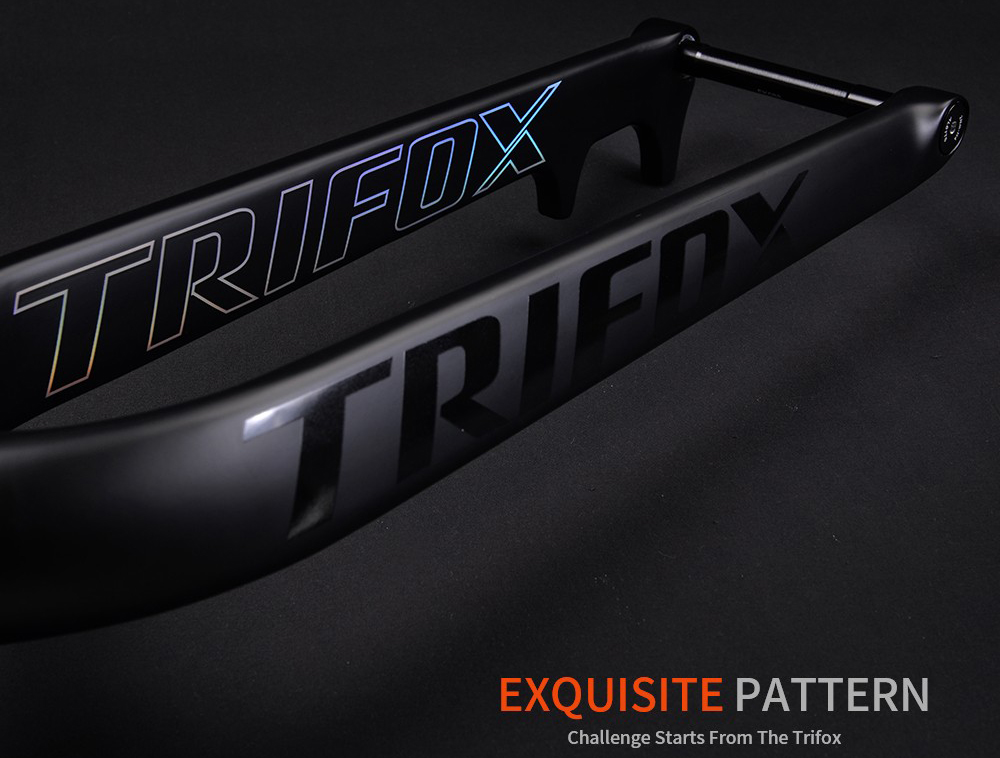
When it comes to mountain biking, trail riders are always looking for the latest gear that can enhance their performance and improve their ride quality. One such game-changer is the Boost MTB Fork, a component that’s quickly gaining traction among trail riders for its ability to offer superior stability, control, and overall ride quality. Specifically, the Trifox 29er Disc Brake Tapered Carbon MTB Rigid Fork (TMK200) has redefined the way riders experience technical trails.
Enhanced Stability and Control
The Boost MTB fork features an increased hub spacing of 110mm, compared to traditional forks that typically use a 100mm spacing. This wider stance improves wheel stiffness and creates a more stable front end, which translates to better control on rocky, uneven terrain. For riders navigating tricky sections of a trail, this added stability means a smoother, more controlled ride, allowing you to power through obstacles with confidence.
Superior Strength with Lightweight Carbon Fiber
The Trifox TMK200 is crafted from high-quality carbon fiber, a material known for its exceptional strength-to-weight ratio. This allows the fork to provide the durability needed for tough trail conditions, while keeping the overall weight low. The result is a robust fork that won’t weigh you down, helping you maintain speed and agility on the trails.
Improved Handling and Ride Quality
The Boost MTB fork also helps improve the handling and responsiveness of your bike. With better axle alignment and an optimized fork design, the TMK200 offers more precise steering and less flex, so you can ride with greater confidence and efficiency. Whether you're tackling technical descents or navigating tight corners, this fork helps you stay in control and ride faster.
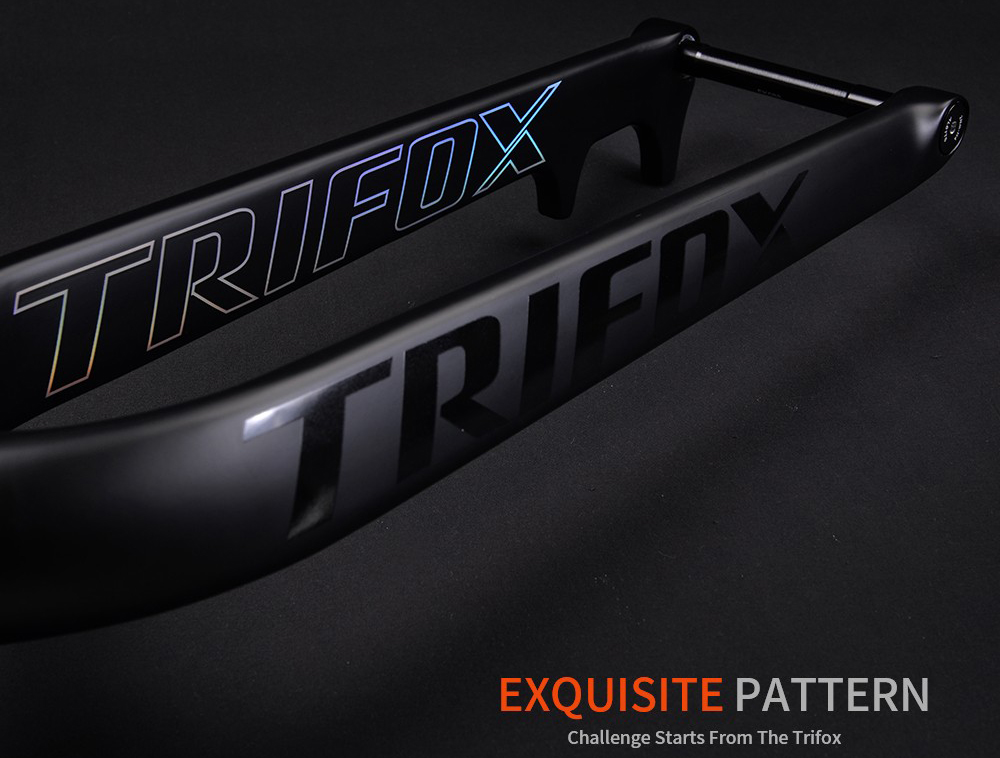
For trail riders looking to elevate their performance, the Boost MTB Fork is truly a game-changer, offering superior stability, strength, and handling.
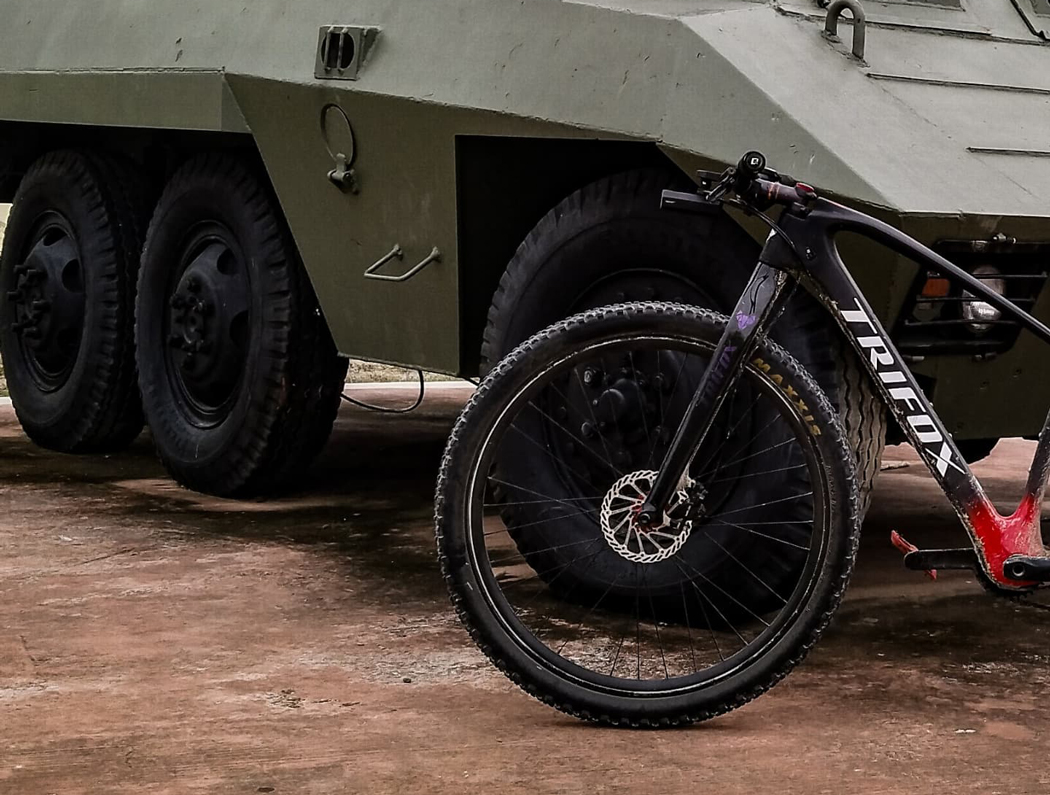
When it comes to mountain biking, every component of your bike plays a crucial role in shaping your riding experience. Among these, the fork is indispensable, directly affecting control, weight, and overall bike performance. The 29er rigid fork has become a popular choice for many riders seeking efficiency and simplicity.
Advantages of a 29er Rigid Fork
1. Weight Reduction: One of the most significant benefits of a rigid fork is its lightweight nature. Unlike suspension forks, rigid forks eliminate the extra weight added by suspension components, which can be particularly advantageous for riders looking to enhance their biking speed and efficiency. This weight reduction translates into easier handling and quicker climbs, allowing you to conserve energy over long distances.
2. Increased Control and Precision: With no suspension to compress or rebound, a rigid fork offers direct and immediate feedback from the terrain. This characteristic provides riders with exceptional control and precision, making technical maneuvers more predictable and stable. It's especially beneficial for riders who prefer a more direct connection to the trail.
3. Durability and Low Maintenance: Rigid forks are known for their durability and simplicity. Without moving parts that require regular servicing, such as seals and bushings found in suspension forks, maintenance is minimal. This reliability makes rigid forks perfect for bikepacking and long-distance rides where maintenance opportunities might be limited.
Why Choose a 29er?
The 29-inch wheel size, or 29er, offers several benefits, such as better momentum retention, improved rollover ability on obstacles, and enhanced traction. When combined with a rigid fork, a 29er setup can offer a smooth and efficient ride on a variety of terrains. The larger wheel size helps maintain speed over rough terrains and provides a more stable ride, making it ideal for endurance cycling and cross-country trails.
Features of Trifox Rigid Forks
Trifox Bike offers an impressive range of carbon rigid forks that are designed to meet the diverse needs of mountain bikers:
- Carbon Construction: Trifox’s rigid forks, like the Carbon MTB Fork QMK100, are constructed from high-quality carbon fiber, which ensures they are not only lightweight but also incredibly strong and durable. The carbon material also contributes to vibration dampening, offering a more comfortable ride compared to metal forks.
- Competitive Pricing and Offers: Trifox provides excellent value for their products, often offering significant discounts, such as the 41% off on the QMK100 model. This affordability makes it easier for riders to access high-quality components without breaking the bank.
Tips for Choosing the Right Rigid Fork
1. Compatibility: Ensure the fork you choose is compatible with your bike frame and wheel size. A 29er fork should match a 29-inch wheel setup.
2. Material Quality: Opt for forks made from high-grade materials like carbon fiber for the best combination of weight savings and durability.
3. Terrain Suitability: Consider the type of terrain you frequently ride on. A rigid fork is ideal for smoother trails and cross-country rides.
4. Budget: Set a budget and look for options within that range that offer the best quality and features. Trifox’s offerings provide great value for money.
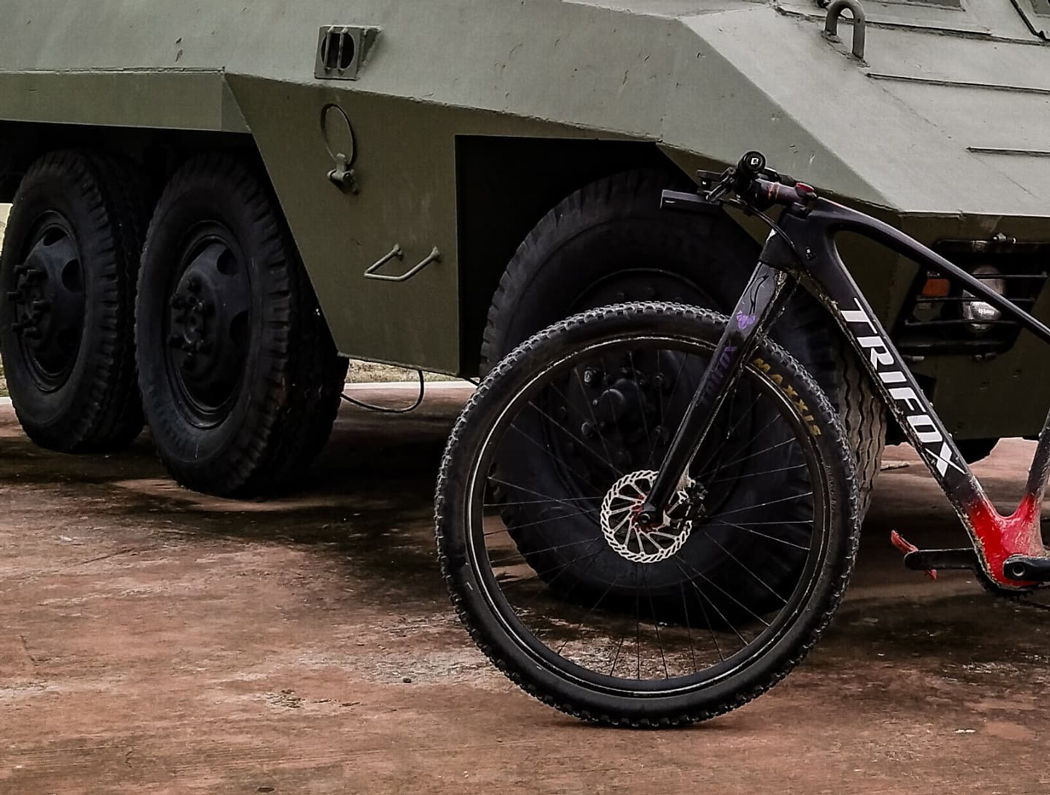
Conclusion
Opting for a 29er rigid fork can redefine your mountain biking experience by providing unmatched control, reduced weight, and minimal maintenance. Trifox Bike emerges as a leading choice with its high-quality carbon constructions and customer-friendly services. Whether you're an avid cross-country rider or someone seeking a reliable fork for everyday trails, a 29er rigid fork from Trifox can be an excellent addition to your mountain bike, enhancing both performance and enjoyment on every ride.

Customizing a rigid fork for your bike can significantly enhance your riding experience, particularly when using high-quality carbon models. Rigid forks, such as those offered by Trifox Bike, provide a unique blend of lightweight performance and durability, making them an excellent choice for mountain biking enthusiasts.
Benefits of Rigid Forks
Rigid forks are known for their simple design and efficiency. Unlike suspension forks, they do not have moving parts that can wear out, leading to less maintenance and a lighter overall bike weight. This simplicity also translates into improved responsiveness and precision, which is ideal for riders tackling smooth trails or urban environments. Carbon rigid forks, like Trifox's QMK100 and TMK200, further enhance these benefits by offering exceptional strength-to-weight ratios. This means you can enjoy a sturdy ride while minimizing the load you carry, which is crucial for long-distance rides or climbing steep terrains.
Customization Options
1. Weight Adjustments: Depending on your riding style, you might prioritize either weight or strength. Carbon rigid forks are inherently light, but you may want a specific weight distribution for your setup. Choosing a fork like the Trifox Carbon MTB Fork QMK100 allows you to enjoy a balanced ride with an optimized weight for climbing or sprinting.
2. Terrain Suitability: Your choice of rigid fork can be adapted to different terrains. For instance, the TMK200 model is designed to handle rugged trails with ease, providing stability and control. Customizing your fork to match your primary riding terrain can enhance your bike’s performance, whether you’re navigating city streets or mountain paths.
3. Riding Style: Consider your riding style when customizing your fork. If you’re a commuter, you might want a fork that offers quick handling and precision. Mountain bikers, on the other hand, might prioritize strength and durability to withstand challenging off-road conditions.
Installation and Maintenance
Customizing your rigid fork also involves proper installation and maintenance to ensure optimal performance. Here are some tips:
- Installation: When installing a new rigid fork, ensure that it is compatible with your bike's frame and wheel size. Follow the manufacturer’s guidelines closely, and consider having a professional bike mechanic assist you if you’re unsure.
- Maintenance: Keep your rigid fork clean and regularly check for any signs of damage or wear. Although rigid forks require less maintenance than suspension forks, inspecting them periodically ensures longevity and reliability.
Choosing the Right Fork
Selecting the right rigid fork involves balancing performance and comfort. Trifox’s range of carbon rigid forks offers various options to suit different preferences. The QMK100, for example, is an excellent all-rounder that offers a good blend of weight and durability, while the TMK200 might cater more to those seeking a rugged, trail-ready option.
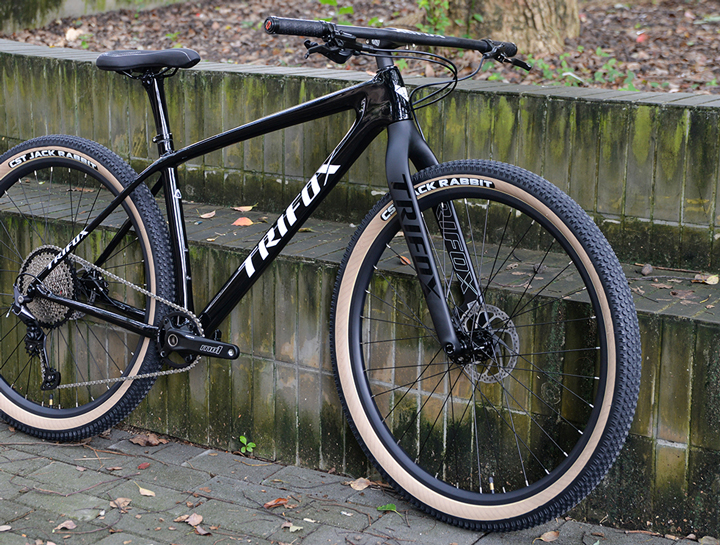
Conclusion
Customizing a rigid fork for your bike is more than just a technical upgrade; it’s about enhancing your overall biking experience. By knowing how to adjust your fork for weight, terrain, and riding style, you can significantly improve your bike’s performance and your comfort on the ride. Whether you're choosing a Trifox QMK100 for its lightweight advantage or the TMK200 for its robust design, understanding the customization process and maintenance needs will help you make the most out of your biking adventures. Embrace the simplicity and precision of rigid forks and enjoy the ride!

Selecting the right rigid carbon fork can significantly enhance your mountain biking experience, providing a balance of weight, durability, and performance. Trifox Bike offers a range of high-quality carbon MTB forks that cater to various biking needs.
1. Understand the Benefits of Rigid Carbon Forks
Rigid carbon forks are ideal for riders seeking a lightweight and maintenance-free option. Unlike suspension forks, they provide direct feedback from the trail, improving pedaling efficiency and offering a more controlled ride on smooth surfaces. Trifox's carbon forks are known for their robust build and lightweight design, making them perfect for speed enthusiasts and those riding primarily on cross-country or urban trails.
2. Weight Considerations
One of the primary advantages of rigid carbon forks is their reduced weight compared to suspension forks. Lighter forks enhance your bike's agility and handling, especially crucial for competitive cyclists. Trifox's models, such as the Carbon MTB Fork QMK100 and TMK100, are designed to minimize weight without compromising strength, offering a significant performance benefit for racers and casual riders alike.
3. Durability and Material Quality
When choosing a carbon fork, durability is key. Look for high-quality carbon construction that offers resilience against the stresses of mountain biking. Trifox ensures their forks undergo rigorous testing, providing a product that withstands the rigors of trail riding. Their carbon forks also boast a sleek finish, adding aesthetic appeal to your bike.
4. Compatibility with Bike Frames
Before purchasing a fork, ensure compatibility with your bike's frame. Consider the steerer tube diameter and axle type. Trifox's forks are designed to accommodate various frame sizes and styles, ensuring a seamless integration with most MTB setups. It’s crucial to verify these specifications to avoid any installation issues.
5. Performance Benefits
Rigid carbon forks from Trifox offer enhanced power transfer, as they do not absorb pedal energy like suspension forks. This allows for more efficient climbing and acceleration. These forks are particularly beneficial for riders who prioritize speed and efficiency over cushioning on bumpy trails.
6. Price and Value
While carbon forks can be more expensive than their aluminum counterparts, they are an investment in performance and quality. Trifox offers competitive pricing, often with significant discounts and free shipping on orders over $50, making their carbon forks accessible without compromising on quality.

Conclusion
Choosing the perfect rigid carbon fork involves balancing weight, durability, and compatibility with your biking needs. With Trifox's range of carbon MTB forks, you can enhance your bike's performance and enjoy a more responsive ride. Whether you're a seasoned rider or a beginner, investing in a quality carbon fork can elevate your mountain biking adventures. Remember to assess your riding style and terrain preferences to select the fork that best suits your needs. Happy riding!
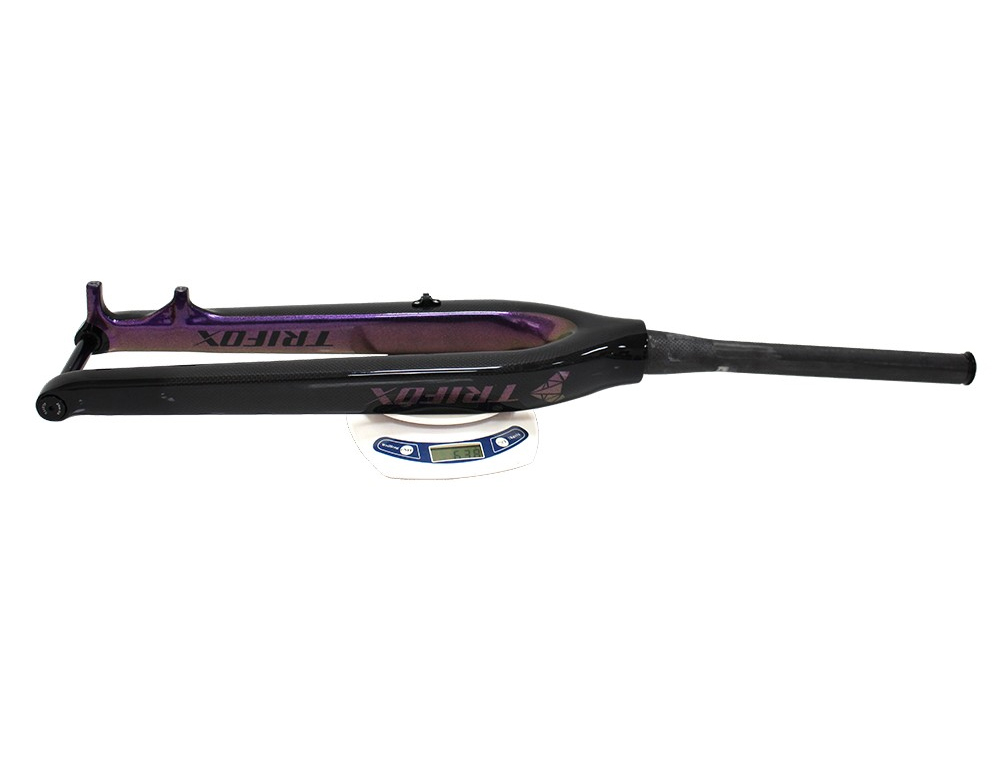
When it comes to enhancing your mountain biking experience, upgrading your bike's fork can be a game-changer. One such component that has been capturing attention is the 29er Rigid Carbon Fork, specifically the Trifox TMK100 model. But is this fork the ultimate upgrade for your mountain bike adventure? Let’s delve into its features, benefits, and what real users have to say about it.
The Trifox TMK100 carbon MTB fork is engineered for performance, featuring a T800 carbon fiber construction that offers a perfect blend of strength and lightness. At approximately 600 grams, this fork significantly reduces the front-end weight of your bike, making uphill climbs easier and improving handling. The carbon fiber not only keeps the weight down but also contributes to the fork's durability, ensuring it can withstand the rugged demands of off-road cycling.
One of the standout features of the TMK100 is its compatibility with disc brakes. This integration ensures reliable stopping power, which is crucial for navigating challenging terrains.
Whether you're descending a steep trail or maneuvering through tight corners, the disc brakes provide the confidence and control needed to tackle any adventure. Moreover, the fork's tapered design, ranging from 1-1/8 to 1-1/2 inches, enhances stability and steering accuracy, allowing for precise handling even in tricky situations.
The fork is specifically designed for 29-inch wheels, making it an excellent choice for modern mountain bikes. It accommodates up to 2.1-inch tires, giving you the flexibility to choose tires that match your riding style and terrain preferences. This feature is particularly beneficial for riders who enjoy exploring various trails, from smooth paths to rocky and uneven tracks.
Customers who have opted for the Trifox TMK100 have shared overwhelmingly positive reviews. Users like Mathieu appreciate the fork's light weight and robust design, noting that it enhances their biking experience without compromising on durability. Ahlvers echoes this sentiment, highlighting the fork's strong build and appealing aesthetics. James, another satisfied customer, mentions how the fork has exceeded expectations in terms of performance and quality. With a perfect 5-star rating from all reviewers, it's clear that the TMK100 has made a strong impression on the mountain biking community.
The benefits of using a rigid carbon fork extend beyond just weight reduction and durability. By eliminating the suspension, a rigid fork like the TMK100 provides a more direct connection to the trail. This can lead to improved pedaling efficiency and a better feel for the terrain, which many seasoned riders find preferable for specific types of biking, such as cross-country and gravel riding. The direct feedback from the trail allows for a more engaged and responsive riding experience, helping you to become a more adept and skilled rider over time.
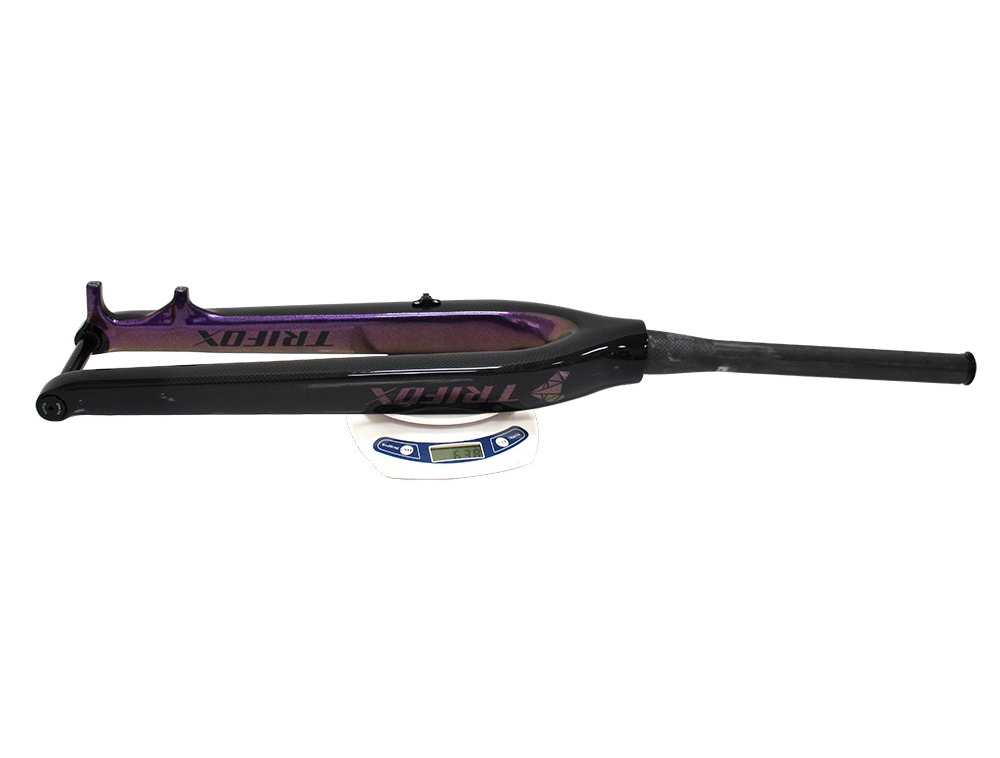
In conclusion, the 29er Rigid Carbon Fork, particularly the Trifox TMK100 model, offers a compelling upgrade for mountain bikers seeking to enhance their performance and enjoyment on the trails. Its lightweight yet durable construction, paired with its compatibility with disc brakes and 29-inch wheels, makes it a versatile and reliable choice.
The positive customer feedback further underscores its value, suggesting that for those ready to venture off the beaten path, the TMK100 could indeed be the ultimate upgrade for your mountain biking adventures. Whether you're a seasoned pro or an enthusiastic beginner, this fork promises to take your ride to new heights.
























































